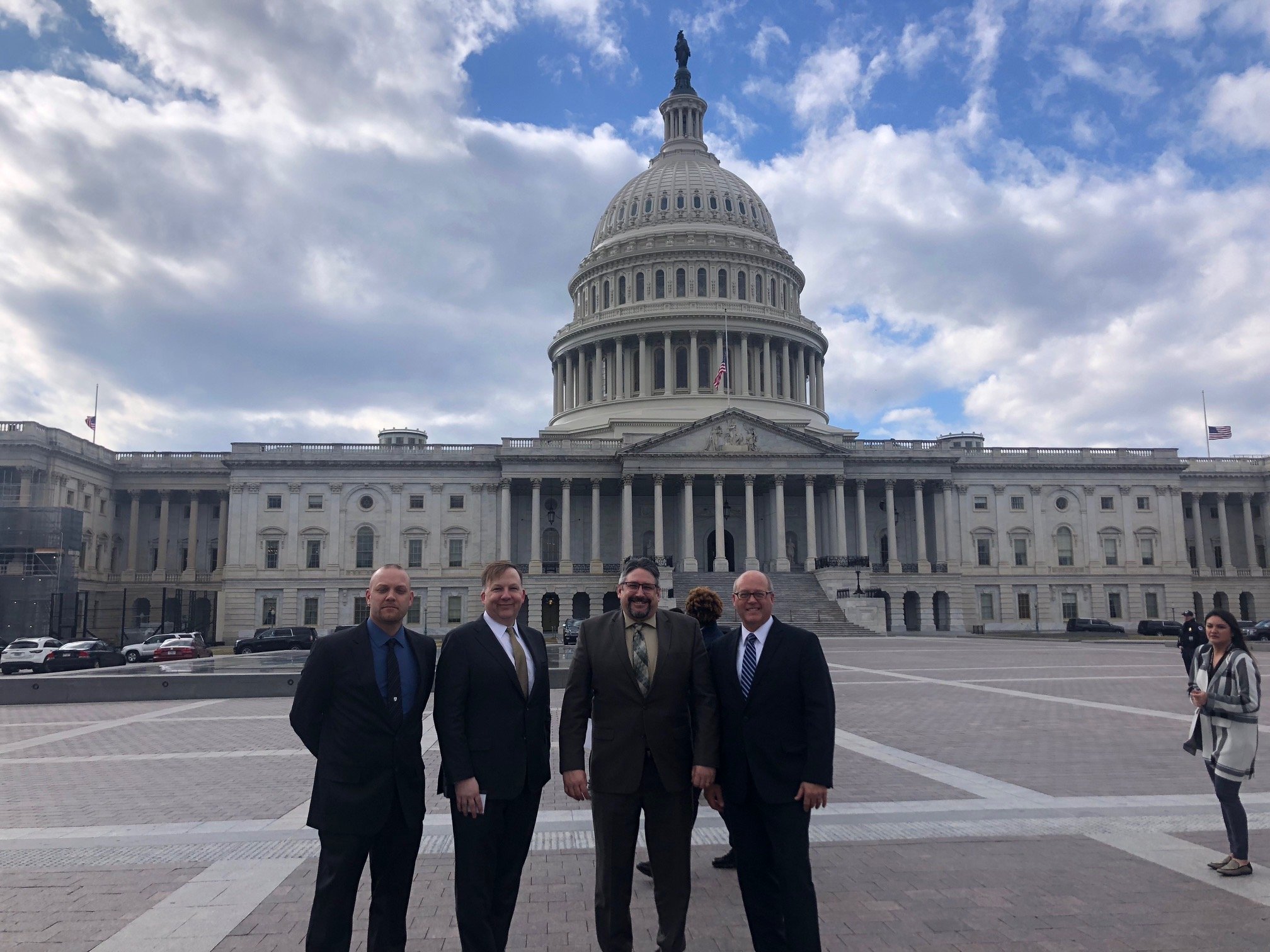 Last week I participated in the FRP composite industry’s Infrastructure Advocacy fly-in to Washington DC. It is the fourth year in a row that our trade organization, the American Composite Manufacturer’s Association (ACMA), organized meetings on Capitol Hill dedicated to spreading the word about how composite materials can improve our nation’s infrastructure. In our roles as manufacturers, material suppliers and taxpayers, we met with a wide range of congressional offices, including senators, representatives, committees (responsible for infrastructure topics) and staffers. The number of meetings we attended was up over last year. I attribute that to the fact that infrastructure is one of the few topics in DC that is bi-partisan. We found strong, positive support on both sides of the aisle.
Last week I participated in the FRP composite industry’s Infrastructure Advocacy fly-in to Washington DC. It is the fourth year in a row that our trade organization, the American Composite Manufacturer’s Association (ACMA), organized meetings on Capitol Hill dedicated to spreading the word about how composite materials can improve our nation’s infrastructure. In our roles as manufacturers, material suppliers and taxpayers, we met with a wide range of congressional offices, including senators, representatives, committees (responsible for infrastructure topics) and staffers. The number of meetings we attended was up over last year. I attribute that to the fact that infrastructure is one of the few topics in DC that is bi-partisan. We found strong, positive support on both sides of the aisle.
It’s been said that the definition of insanity is doing the same thing over and over and expecting a different result. That mindset seems to be taking root because a growing number of decision makers are interested in finding long term solutions for infrastructure. Our top priority is encouraging the adoption of innovative materials, and not just FRP composites. The category also includes high-performance concretes and sustainable steel.
The administration also supports the innovative material theme as a better solution. The composites industry and other material trade associations worked with congressional offices to introduce the IMAGINE Act. This act would eliminate procurement rules that make it difficult for owners, agencies and engineers to use newer materials. It lays the ground work for a level playing field where unique infrastructure materials—with their ability to save costs and provide a return on investment in as little as 15 years—are no longer considered a specialty product. We received positive feedback and hopefully innovative materials will be included in future legislation.
Other items that we discussed with the congressional offices we met with included introducing a small bill to the Senate and House to fund National Institute of Standards and Technology (NIST) to become the clearinghouse for composite infrastructure data. There is a wealth of information generated by projects at agencies and DOTs across the country. When an engineer wants to use FRP, he wants to know about previous experience with that material and design. This impartial clearinghouse will make finding information easy. We also shared a Transportation Research Board report just released for the Federal Highway Administration (FHWA). This report evaluated the results of the Innovative Bridge Research Construction program from the late 1990’s and early 2000’s. Innovative materials were deployed on bridges, but the information was not well documented and shared. One of ACMA’s advocacy requests several years back was to collect and disseminate this information. Congress included the request as part of the FAST Act. As a result, this information is now easily available; which is a good thing for everyone.
Interested in learning more about how Fiber Reinforced Polymer stacks up to concrete? Click here to download the Pedestrian Bridge Decks: FRP vs. Concrete now!


